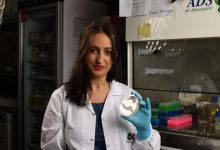
Mosquitoes and diseases
Mosquitoes cause more human suffering than any other organism — over one million people worldwide die from mosquito-borne diseases every year. Diseases transmitted by mosquitoes include malaria, dengue, West Nile virus, chikungunya, yellow fever, filariasis, tularemia, dirofilariasis, Japanese encephalitis, Saint Louis encephalitis, Western equine encephalitis, Eastern equine encephalitis, Venezuelan equine encephalitis, Ross River fever, Barmah Forest fever, La Crosse encephalitis, and Zika fever.
What’s new?
A team of researchers from The University of Texas at Austin has developed a new diagnostic tool which can help to identify the dangerous species of mosquitoes with a simple yes-or-no readout on a cell phone. This new tool can also help to identify whether the bug has come into contact with a mosquito-control strategy known as Wolbachia. Wolbachia is a type of bacteria that keep mosquitoes from spreading diseases. Moreover, this method is quick and cheaply identify disease-causing species causing diseases like Zika virus, dengue, chikungunya or yellow fever.
“Many of these diseases are spreading in areas where they weren’t common before,” said Sanchita Bhadra, a research associate in the Department of Molecular Biosciences and first author on the paper. “Having surveillance is important in conjunction with any kind of outbreak, and this method allows a rapid test in the field.”
How does this tool work?
The tool uses a smartphone camera, a small 3D-printed box and a simple chemical test to show whether a dead mosquito belongs to the Aedes aegypti species. Aedes aegypti carries Zika and other devastating viruses that afflict an estimated 100 million people worldwide each year.
To stop the transmission of viruses, scientists working in public health agencies have started to infect mosquitoes with Wolbachia by introducing the bacteria into a local mosquito population. Hence to monitor the effectiveness of Wolbachia, this new tool can be used as mosquitoes show no outward signs of having the bacteria.
“This test can happen without involving a lot of staff and equipment to make sure Wolbachia is effective and spreading as anticipated,” Bhadra said.
Why is it better than existing technology?
Existing technology involves complex processes which are expensive and also have the possibility of more error in a lab test. While this new diagnostic tool, determination of dangerous disease can be done anywhere with a simple test. It tests mosquitoes’ nucleic acid without requiring a complicated process to remove it.
This new tool is officially known as a loop-mediated isothermal amplification and oligonucleotide strand displacement, or LAMP OSD, the probe delivers a simple yes-or-no readout on a cell phone, with an accuracy of greater than 97 percent.
With this research in mind, the next step of the team is exploring the use of the technology to easily identify whether trapped mosquitoes are carrying Zika, dengue and other pathogens as well as detecting mosquito species and Wolbachia.






